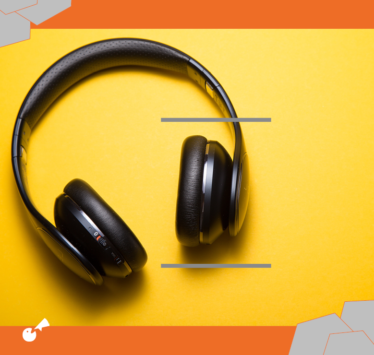
The early brand gets the earworm
Let’s start off with a little game.
Albeit, one that you may ultimately hate me for.
Read the following advertising lines out loud or in your head, and notice what sound or phrase comes up next.
1. “Chicken parm you taste so good”
2. “We are Farmer’s…”
3. “I’m Lovin’ It”
If you watch a good bit of TV, then your brain probably did the following things when you read those lines.
1. Sang “Nationwide is on your side” afterwards and possibly saw a visual of Peyton Manning singing to a sandwich.
2. Heard the Farmer’s Insurance “bum ba-dum bum bum bum” tune.
3. Heard the Mickey D’s “ba da da da bah” in your head.
And now you may possibly have an earworm stuck in your head for the next few hours. Sorry!
Why in the world are these tunes in our head?!?!
This technique of creating a catchy tune that matches up with the brand name is called a mnemonic.
mne•mon•ic (noun): a device such as a pattern of letters, ideas, or associations that assists in remembering something.
We are most familiar with mnemonics as patterns of letters that help us remember something, for example the mnemonic of “Every Good Boy Does Fine” helps musicians remember their treble clef lines (E-G-B-D-F).
But mnemonic devices can also be in the form of sound, visuals, phrases, and colors.
In fact, Verizon’s “can you hear me now?” catchphrase was considered a phrase mnemonic. (Curious to know if the Verizon guy was actually influencing us? Read my blog on it!)
Therefore, Nationwide’s decision to have their slogan “Nationwide is on your side” done in a sing-songy kind of way is a mnemonic sound meant to aid recognition and recall of their brand.
Same for the musical notes added to Farmer’s Insurance and McDonald’s taglines.
Is a mnemonic the same as a jingle?
Not exactly.
To nerd out on this a little bit, let’s look at the differences between a mnemonic, a jingle, and a song.
Mnemonics are usually quite short, just a few notes, that aim to help you remember the brand. The Intel “bong” is a great example of this. It was played at the end of every commercial (both in Intel ads and retail store ads), along with a visual mnemonic of the circle going around the name.
Jingles are short songs with the brand name as the main feature of the song. It’s not just any old song, it’s a song written explicitly to promote the brand. I LOVE jingles and I can often be found singing very old and sometimes obscure jingles (such as Big Red chewing gum and Just for Men Gel – do you know those?)
Songs are usually accompanying and/or background music for an ad that was either purchased or commissioned to create a feeling and emotion in the commercial. It does not feature the brand name and it usually changes from commercial to commercial (or campaign to campaign).
In the end, if you call mnemonic sounds “jingles”, then that’s fine too. Everyone does it. (I told you it was nerding out.)
How mnemonics work
This little sound device actually has a big impact on us.
Using the Nationwide example, I created a diagram that shows how these few notes add up to having a big, and lasting, impression on us.
Woah – mind blown, right?
Peyton Manning singing a tune about eating a chicken parm sandwich has resulted in your willingness to consider Nationwide as an insurance company.
Crazy, I know.
More than just an earworm
Another benefit of using a mnemonic is that it can create consistency across time and across different creative concepts and campaigns.
So that if a brand changes their advertising approach, or has several concepts running at the same time, the signature “sign-off” helps consumers connect them all together as one unified brand.
As featured in the above diagram, consistency also helps the brand be more memorable, which in turn means you’ll likely feel more positively about the brand (and either buy their products or recommend them to others).
Unfortunately, there’s no magic formula for what makes a mnemonic stick. Overall, they should be simple, quick and catchy while avoiding any potential annoyance factors (it must be pleasing to the ear).
Play the mnemonic game at home!
Mnemonic devices are everywhere! How many mnemonic devices can you spot when watching TV this week?
Feel free to make it a drinking game…



